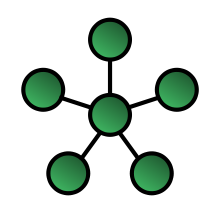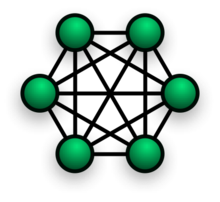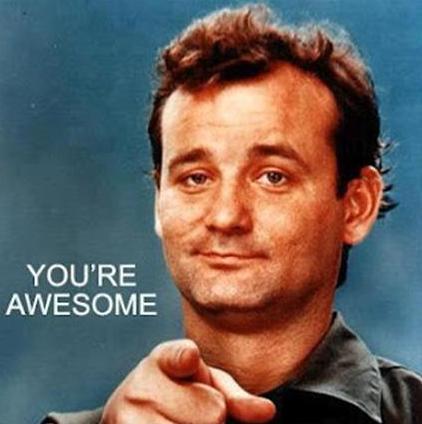Upwell’s unique model of “community management”
One of the goals of Upwell was to empower the influential voices in Team Ocean to create and share content that would increase attention to the crisis the ocean is facing. While much of our time was devoted to creative campaigning and all-consuming research projects to meet that goal, there’s one important element we talked less about: community management.
My job was as much about communicating within the network of ocean influencers as it was about the ideas they communicated about with the world. Without a strong network, our campaigns would be like a fancy car with no fuel - they’d look nice, but they’d go nowhere.
In our pilot report of 2013, we detailed how we built our community from the ground up (page 54). Here’s just a selection of the community building activities we detailed in that report:
We attended conferences like the Blue Ocean Film Festival, Oceans in a High CO2 World, and Science Online. We provided in-depth feedback and data to groups like The Ocean Project and Conservation International on efforts like World Oceans Day and the Ocean Health Index. We sent our most loyal Tide Report subscribers postcards on a weekly basis, thanking them for being part of Team Ocean. We conversed with our peers on Twitter and retweeted their content when we couldn’t feature it in a Tide Report. We also did some strategic work to better connect the lingerers and lurkers in our network. We analyzed our Tide Report subscriber list against our Twitter followers and Facebook fans to understand how to more deeply engage people that were only aware of some of our activities.
When we asked people to sign up and join us, it wasn’t a one-time thing. Our welcome email, sent to new subscribers of the Tide Report, told them we were asking them to make us a commitment:
Our goal is to increase the number of social mentions about the ocean issues we all care about. To do that, we rely on you.
We know you care about the ocean, but it's not always easy to find great content to share. That's where we come in. We find, create, and package awesome stuff (videos, images, blog posts, and more), share it with you in the Tide Report, and in each issue, we ask you to spread them via your social channels (your personal and your organizational ones!)
At the root of our community building and managing philosophy is a commitment to provide value. We knew the people in our network wouldn’t amplify what we suggested unless they felt they were getting something from us. We did this by connecting people with each other, giving away our conversational research, and acting as a free PR service for captivating ocean campaigns.
Reciprocity is the currency of the internet. Whatever we received or found we then shared and amplified. This turn-up-the-volume effort helped many ocean influencers connect with audiences who might have missed them. The Tide Report, Upwell’s blog and social media channels, topic-specific webinars, plus staff speaking engagements, guest blog posts and project consulting have provided channels for delivering this value to a diverse audience of time-starved ocean activists.
Our method of influencer community management has been a hybrid of modern digital PR, offline community organizing, and online community management. One useful lens for our practice is this: we had a hub-and-spoke model, in which information flowed in, was filtered, and reflected back out. We weren’t placing ourselves at the hub in order to gain power or influence for ourselves, but rather to increase the power and influence of our peers.


Hub-and-spoke network or fully connected mesh network? A little of both.
Rachel thought of this as a concierge service for the nascent ocean movement, offering tailored tips and services to ensure a successful visit to the internet. We prioritized driving traffic and attention to our community members, rather than toward ourselves (which gave us lots of metrics-related headaches). We aspired to a fully connected mesh style network, wanting the members of the network to be visible to each other. What made our model unique is that we reflected our community back to itself, while adding a layer of insight. We did this on a regular basis, but we also had focused moments like the Sharkinar where we intentionally increased the size, impact and reach of a specific issue community.
These were some of the methods that defined our influencer community management model:

Targeted recruitment
As mentioned above, Upwell attended conferences and meetings and we asked people to join our network in person. Many of these people were identified and specifically targeted. Through our conversational research, we also identified online influencers around key ocean topics, and reached out to them over Twitter and email to ask them to sign up for the Tide Report and join our webinars. Our recruitment methods went into high gear around events like our #Acidinar and our #Sharkinar. We wanted to make sure the right people, who could significantly influence online conversation, would be on the phone.
Data services
A core part of Upwell’s work was around conversational data analytics. We had access to social data scraping tools that would have been prohibitively expensive for many organizations to access on their own. By taking the lens of movement-level metrics we were able to provide an entirely new service to a diverse community. Our analysis was sometimes shared in little bits, via our blog and the Tide Report, and sometimes shared in large chunks like our pilot report and our State of the Online Conversation reports about Overfishing and Ocean Acidification.
Content filtering
We received far more tips via our tips email line than we could possibly promote. And often, as I described in my blog post about creating shareable content, the tips we received had some, but not all the necessary elements to generate conversation. We often acted as a filter, receiving all the awesome work from Team Ocean, picking and choosing what to amplify (based on transparent curation criteria), investing creative resources to repackage when necessary, and reflecting back out to the community.
Holding up a mirror
This is the part of our community management that may feel the most familiar. By retweeting and sharing the content of our community, sharing job postings and calendar events, thanking individuals by name, and including the accomplishments of peers in our Tide Report, we simply kept our community members on each other’s radar. We held up a mirror so that our community members saw each other and understood how they all fit together as part of a larger team. As part of this friendly mirror responsibility, we’d also (metaphorically) tell influencers if they had spinach in their teeth, AKA a gentle heads up that if we saw an influencer sharing old/ inaccurate/debunked links.
What made it possible
As part of our work in documenting our community management practice, Rachel and I had a good long discussion yesterday about what familiar network metaphor best fits how we’ve approached this work at Upwell. It resulted in the inclusion of the hub-and-spoke and mesh network references above. But ultimately, we couldn’t quite settle on just one.
We’ve relied on being the hub, where people send their hot tips and look to when they want to know what to share. But we’ve wanted to do it relatively invisibly, in order to not steal any spotlight from our friends and oceany colleagues.
What’s made it possible is all of the individual relationships and the people who trusted us even if we didn’t have 100K followers on Twitter and weren’t the ones being interviewed about breaking news. That’s because our network was an amalgamation of friendships and close working relationships, and we are grateful to the loyalty of every single person. Thank you forever for your trust, and for sharing both your amazing ocean news and the attention of your followers.